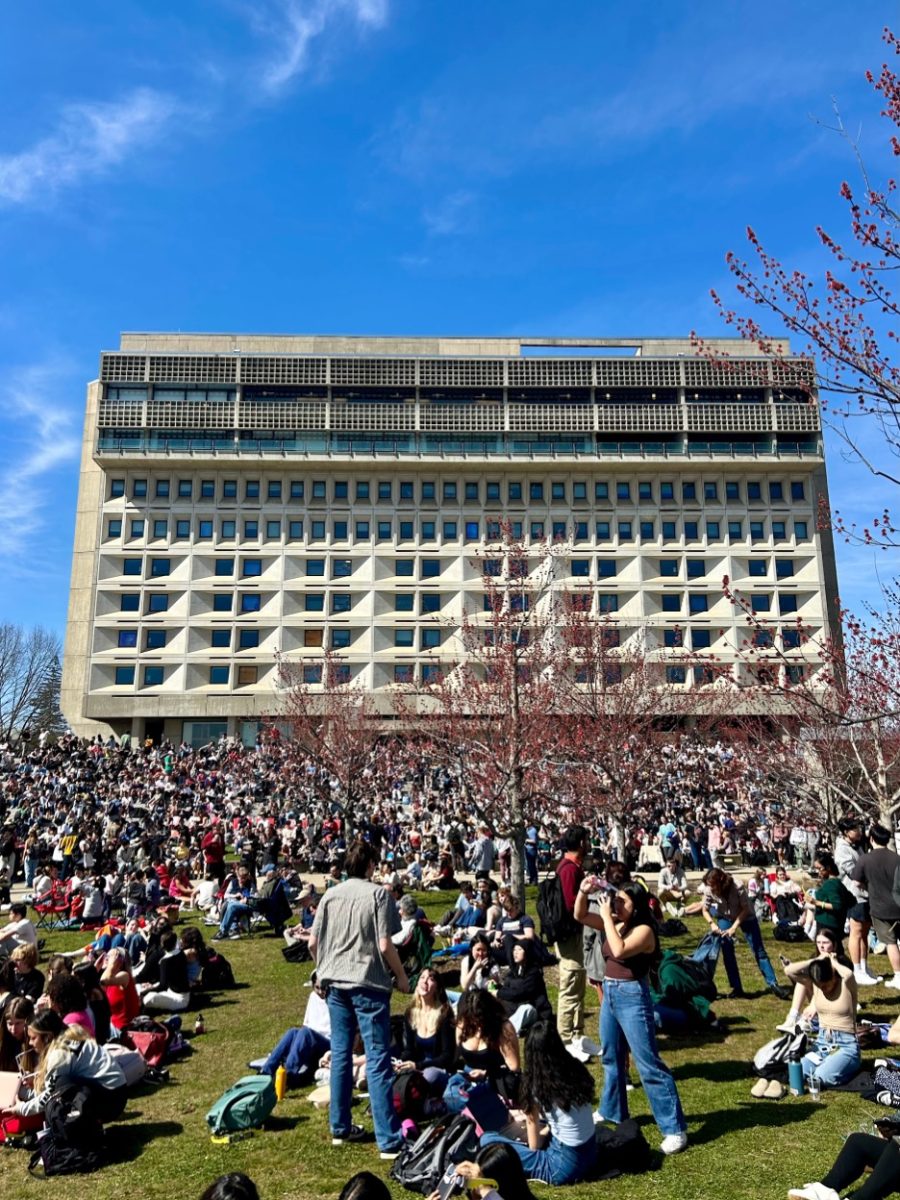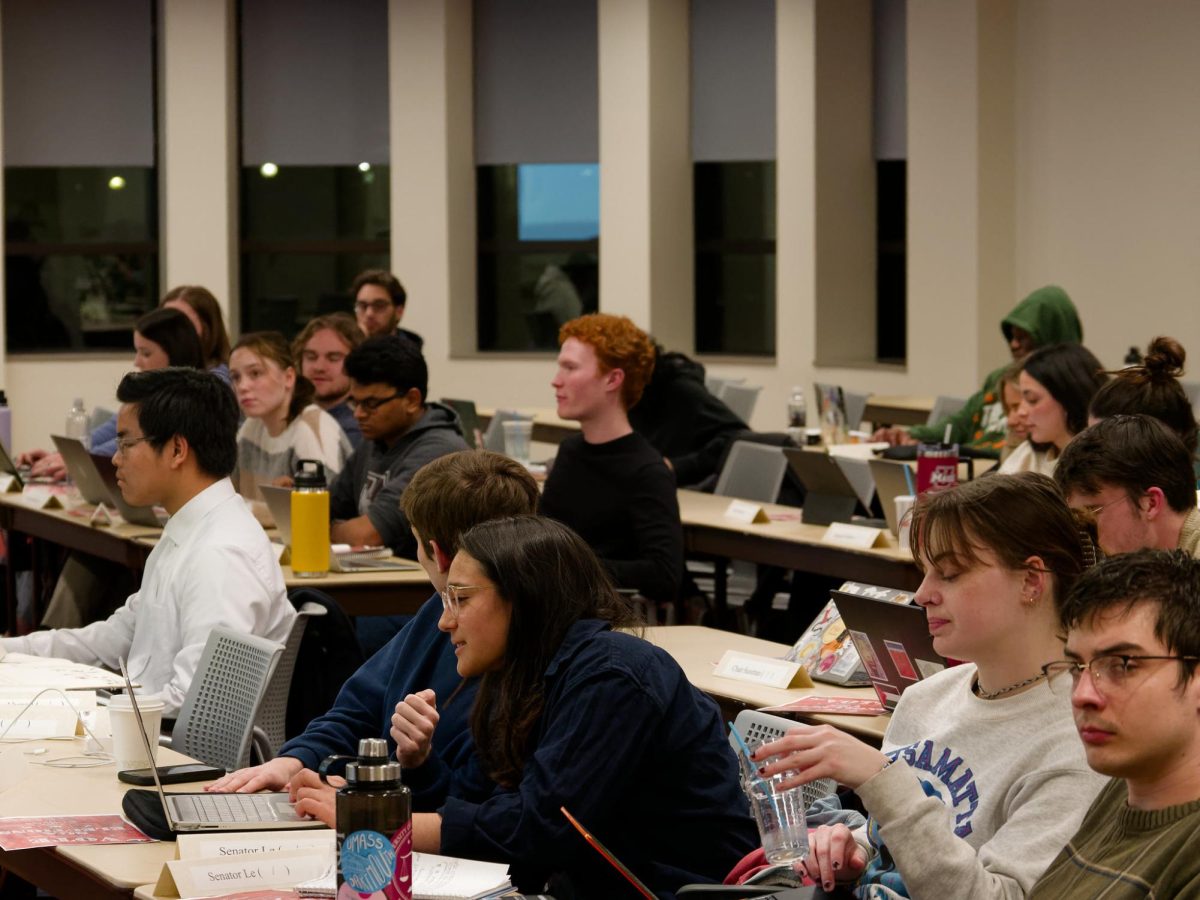
Editor’s Note: The following appears as part of a series, Dollar$ and Sense, featuring reports from the class of Journalism 301, taught by UMass journalism department lecturer and internship coordinator B.J. Roche.
Leanne Becker is only a sophomore at University of Massachusetts, but she already has a plan to pay off her student loans. By the time she graduates, the communications disorder major will have taken out $20,000 in government loans.
“The starting salary for a speech pathologist will allow me to pay off my loans from UMass and grad school within five years,” said Becker. “I’ll just have to be poor for a while.”
There is nearly a 100 percent employment rate for speech pathologists out of graduate school, according to Becker. Becker feels she is lucky to be naturally interested in a field that will pay off. Her other interests, such as her love for theater, are left for extra-curricular activities.
As tuition costs continue to rise, the amount of indebtedness will rise as well. Of the schools in the Five College Consortium, UMass and Mount Holyoke College students graduate with the highest average debt, and the tuition at Mount Holyoke increased by three percent from last year, while in-state tuition at UMass increased by 16 percent, according to their respective Financial Aid Services websites. This is a reality that college students need to take into consideration when financing their education and choosing a career path.
According to UMass Financial Aid Services, 18,000 UMass students received $230 million in financial aid in 2010. The average financial aid package is $13,844, which is enough to cover in-state tuition, and some of the cost of room and board. However, UMass is only able to cover an average of 86 percent of financial aid need. As a result, the average student will still graduate with $25,420 in loan debt.
Mount Holyoke covers 100 percent of perceived financial need, and the average Mount Holyoke student graduates with $22,499 in loan debt, according to the Mount Holyoke Student Financial Services website. According to the College Board’s website the average financial aid package of Mount Holyoke students’ is $37,362, which is nearly 3 times what UMass is able to give. However, this aid does not completely cover the cost of tuition, and room and board at Mount Holyoke, according to the school’s website.
The reality of loan debt calls for foresight and planning for many students. Wendy Simon-Pearson, a senior at UMass, has parents who planned ahead for their two daughters’ college educations. Simon-Pearson’s parents started setting money aside when she was a child. Simon-Pearson’s parents made a deal that they would pay for her undergraduate education if she paid for law school.
“UMass ended up being the best option because it allowed me to graduate without any debt,” said Simon-Pearson. “My parents only had to take out a small loan. That wouldn’t have been the case if I’d chosen to attend a different university.”
Outside scholarships can reduce and even eliminate the need for loans. Salim Zerriny, a senior at UMass, receives a private scholarship for Lebanese-Americans in addition to the scholarship he receives from UMass. Zerriny has not had to take out any loans. However, his scholarships do not carry over to medical school.
College graduates who are not as lucky as Becker or Zerriny may have to settle for any job they can find in order to pay off student loans. Tracy Zhu, a 2008 Mount Holyoke College graduate with a degree in Urban Environmental Justice, took a three-month contract administrative job so that she could start paying off her debt right away while she looked for a job she wanted.
“I must have sent out 30-40 resumes, and only got one reply,” said Zhu. “That one reply led to a year-long internship, and eventually a full-time contract with Literacy for Environmental Justice. I now have a monthly auto-pay set up for my loans.”
Zhu has her auto-pay plan set for the lowest possible repayment rate, because she would rather have disposable income now. Zhu will pay off her $18,000 in student loans over the next ten years. The rest of Zhu’s tuition was covered by federal and Mount Holyoke grants, as well as a private annual scholarship. Zhu chose to attend a private college instead of a public university because private colleges give more financial aid.
Laura Hayden can be reached at [email protected].












